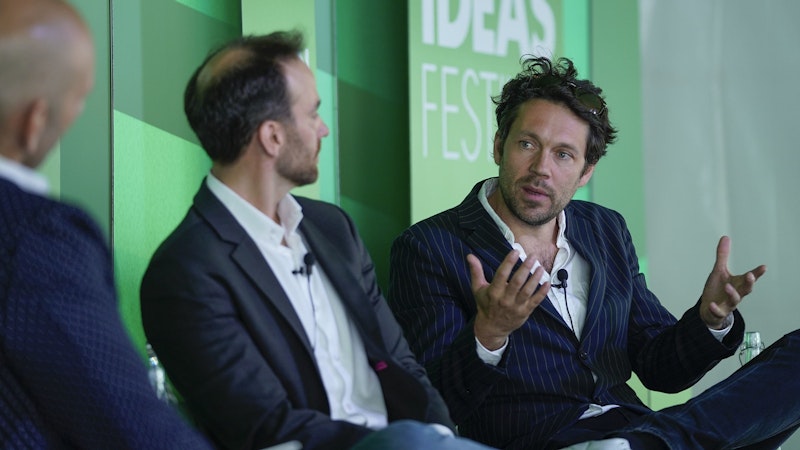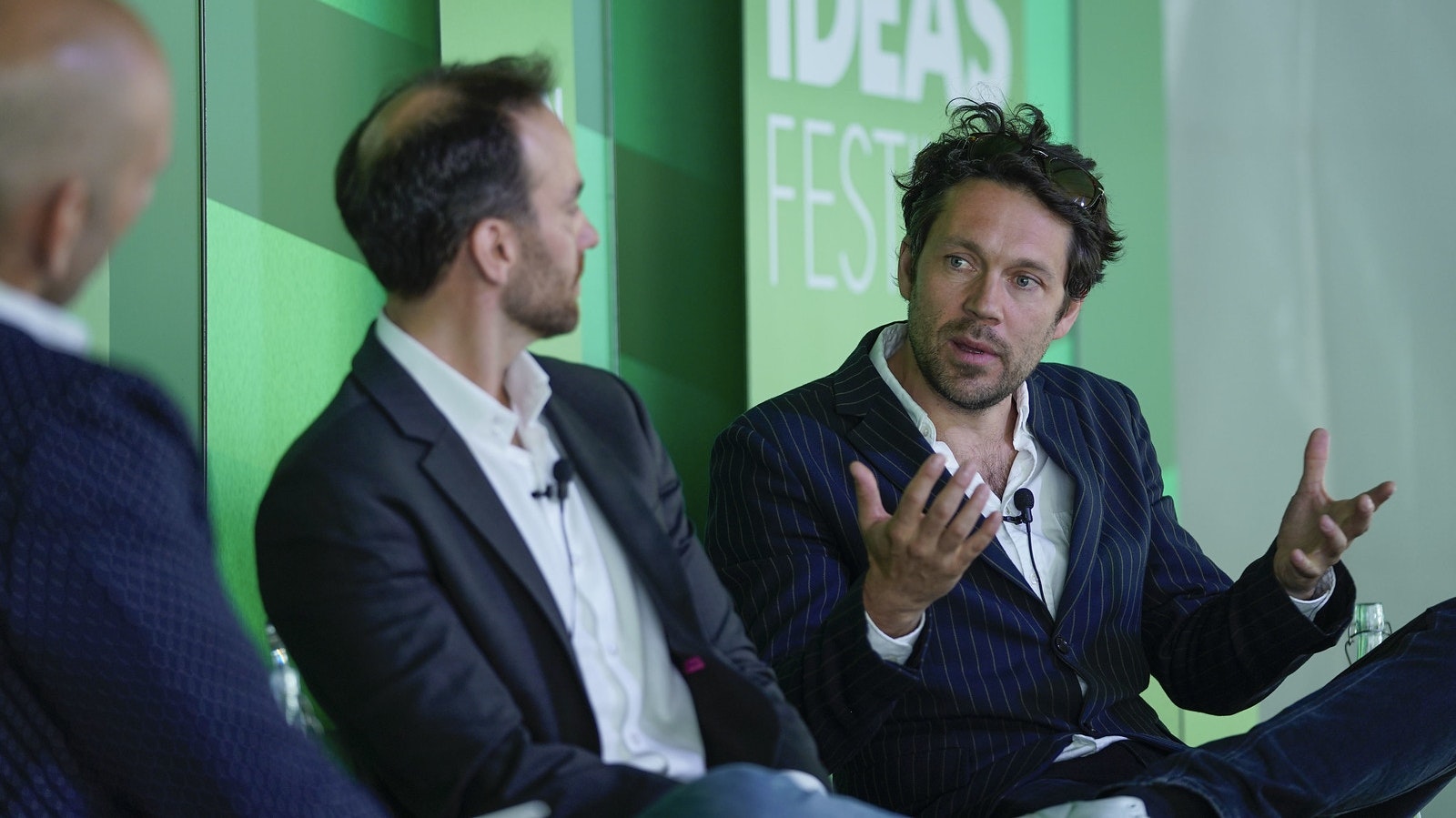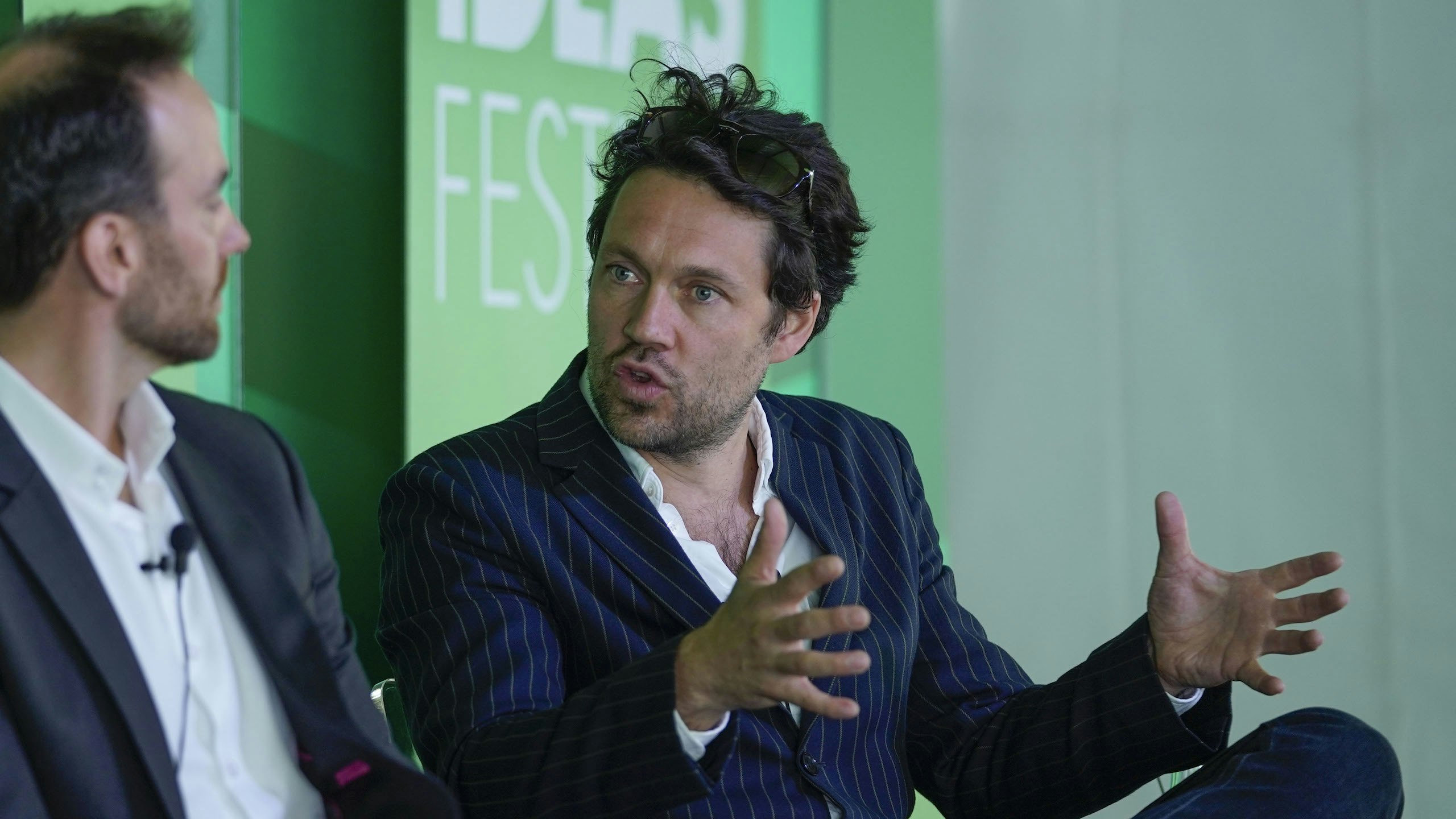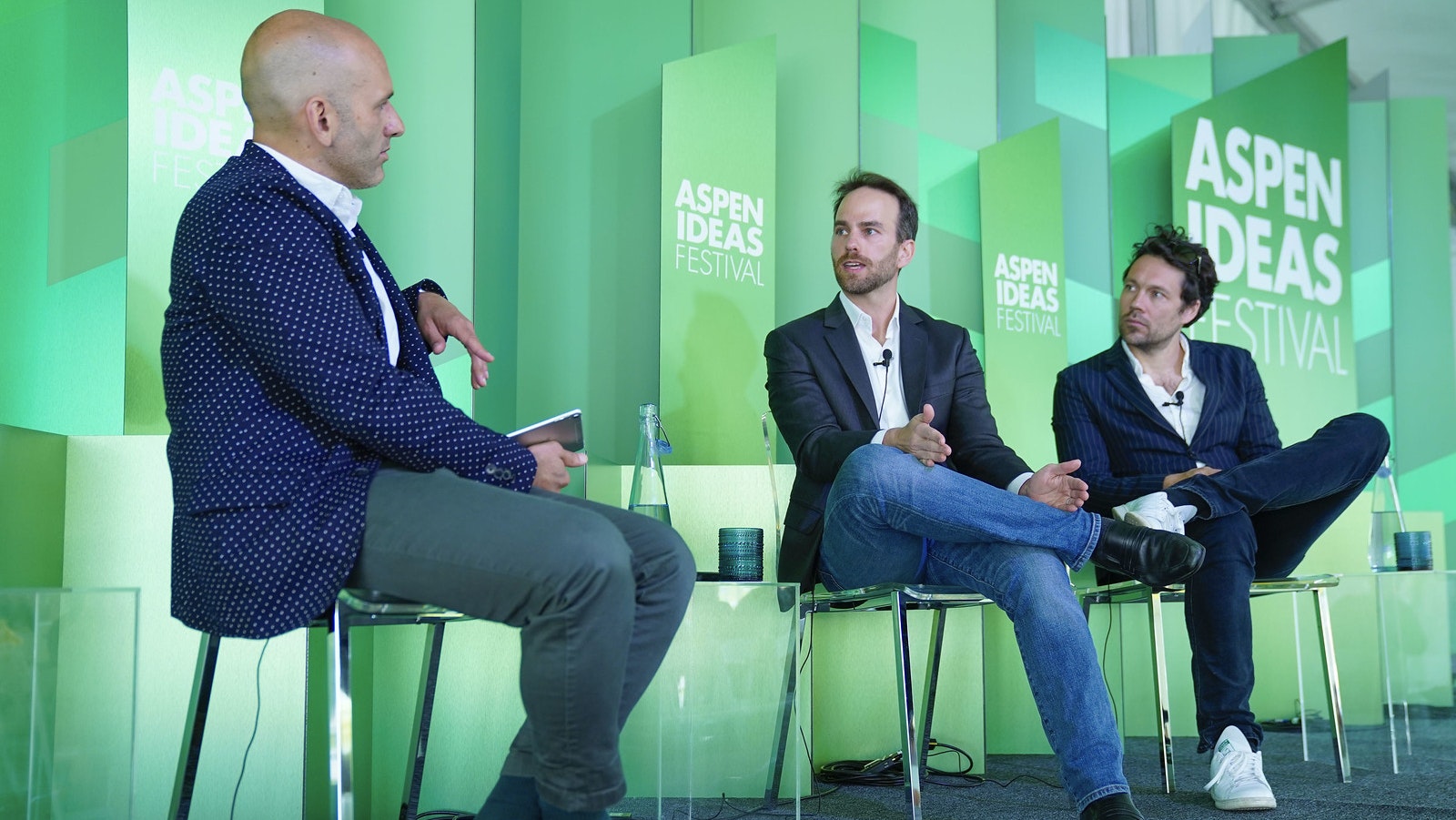
Hyperloop One: The Intersection of Engineering and Design

Because this is a completely new type of transportation, we have the opportunity to think from scratch.
Setup
How we get around fundamentally shapes the way we live, work, and play. From carriages and sailing ships to steam locomotives and propeller planes, methods of moving people and goods have come a long way. Transportation design, however, is an often-overlooked touchpoint in the realm of user experience. Two pioneers in the industry discuss the top design principles for building the first new major mode of transportation in over 100 years.
- 2019 Festival
- Arts
- Technology
- Economy
- Environment
Planes, trains, and automobiles: What is Hyperloop One?
Imagine traveling at the speed of an aircraft, but just a couple of feet off the ground. This is the easiest way to think about Hyperloop One, says chief technology officer Josh Giegel. Hyperloop vehicles travel autonomously through a system of low-pressure tubes, using electric propulsion to accelerate and magnetic levitation to float above a track. Because Hyperloop operates inside a closed tube, Giegel explains, weather hazards aren’t a problem and the aerodynamic drag is low, which makes it more energy efficient than other high-speed modes of transportation.
Did you know?
How 22nd century transportation will change our cities
As the ways people and goods move around the world change, cities and towns must adapt. For the past several centuries, says Jakob Lange, a partner at the architecture firm Bjarke Ingels Group, regional planners have created projects with a constant limit in mind, which is the one-hour commute. But integrating a system like Hyperloop would utterly transform how planners conceptualize cities. Watch Lange explain how speeding up travel times from home to work could increase the geographic reach of cities:
Designing a brand-new user experience
Hyperloop isn’t a train, plane, or car, so its designers are free to reimagine the experience travelers will have, says Jakob Lange. First, the designers want to streamline the boarding process. Instead of entering a congested transport hub and then finding a terminal and gate, Hyperloop designers envision travelers going to one entrance specific to their destination. From there, they would board a pod that holds 20 to 25 people and be off, traveling in a convoy of pods to the journey’s end.
One of the transformative changes Hyperloop aims to make, says Josh Giegel, is to eliminate the notion that things operate on a time schedule. People love the ease of watching television shows and movies whenever they want, he explains, so why couldn’t transport be on-demand in the same way?
Big IdeaYou can’t be late for something that is always there.Josh Giegel
On Hyperloop you don’t have to wait half an hour for the next train, or half a day for the next plane, so you can create each of the pods differently and tailor them to various types of travelers, explains Jakob Lange. For example, in a Hyperloop convoy there could be a quiet pod, a family pod, a luxury pod, and a workspace pod. Hyperloop designers want users to feel free to move around, do work, lounge, and conduct meetings, says Lange — experiences that aren’t usually possible in traditional long-distance transportation systems.
How will the transportation systems of the future work together?
Hyperloop is one of many new forms of transportation designed to take us into the future and reduce travel time. Each of these new technologies, from autonomous vehicles to drones, has its own competitive advantages and drawbacks — but does our transport ecosystem have room for all of them? Watch Josh Giegel and Jakob Lange explain why they believe these transportation technologies ultimately complement each other:
Learn More
Additional Information
Resources
Hyperloop One
Top 10 Questions About Hyperloop, Explained
Explore More
Arts


Julia Louis-Dreyfus has kept us laughing for years in her roles as Elaine Benes in “Seinfeld” and Selina Meyer in “Veep.” But her most recent work has her shifting from comedy...


While the workforce continues to evolve in response to economic shifts and technological advancements, one thing is certain — the traditional blueprints for education and the...

Entrepreneurs view the world differently. Where others see challenges, they see opportunities. They’re a group of self-starters and strivers with the courage to take big risks...

Space… the final metaphor for the unknowable. But we are certainly trying to understand what goes on out there, and the more we learn, the more fascinating questions start to...


It’s a tough time to try and express the complexity of life honestly. Writer Chimamanda Ngozi Adichie doesn’t shy away from truth-telling and believes we should all step up an...


Few working technology reporters have been around as long as Kara Swisher. The start of her career coincided with the emergence of the internet, and she’s interviewed almost a...


Creativity is as intrinsic to our species as any of our basic instincts, says Debbie Millman, designer and curator. But for millions of people in the United States, the abilit...


The entertainment industry has had to pivot and refresh time and again to adapt to constant changes in format, business models and attention spans. Somehow, producer Brian Gra...


Advances in medicine and healthy living mean that more and more people will live to be 100. But just because their bodies can last doesn’t mean their bank accounts will keep u...

Setting audacious goals helps to redefine what is achievable in health, medicine, and science. As we deepen understanding of the human genome, unravel the mysteries of the bra...


Millions of children across America don’t have art classes in school and don’t grow up going to art museums and galleries. They might be hours away from the closest museum, or...


Each year brings more destructive natural disasters and growing evidence of the challenging future we face if we don’t address climate change. But the biggest cause of climate...


New technologies have always led to changes in society, though not always as quickly or drastically as people feared. Could artificial intelligence be different? Instead of le...

October is National Book Month, and we’re celebrating by looking back at some of our favorite conversations about reading and writing from the Aspen Ideas Festival and Aspen I...

Jump in by watching our 15 most popular talks of all time. From black holes to jazz and civil rights to psychology hacks, we've collected the talks that remain audience favori...


If we do absolutely nothing to mitigate climate change, scientists estimate the toll could be $38 trillion a year in damages. Industrialized countries like the United States,...

The United States spends $4.3 trillion—almost one fifth of the nation’s GDP—on health care. As the scale of the medical enterprise expands, venture capitalists are pursuing th...

The recognition that all things are connected is at once a scientific principle and a philosophical touchstone. Humans, animals, and the environment are intertwined in complex...

Everywhere you look, there’s a headline about the power of artificial intelligence and how it will impact our lives in ways we have not yet imagined. From advancing medicine t...


Where will artificial intelligence be in five years, or 10 or 20? What happens if the technology is regulated? And if it isn’t? How will it shape the world and the way we live...
















